Is there anything cuter than a miniature horse? When first born, they're the size of a big-headed puppy, and just as playful. Small horse breeds join the ranks of teacup pigs and baby hedgehogs as some of the most adorable members of the animal kingdom. With great cuteness, though, comes great curiosity. Is it only their size that makes them different from regular horses? Why the small stature? Most importantly: do they make for good pets?
Before going out and picking up your own little equine, there are several factors to consider. For example, do you have enough space to adequately care for a miniature horse? The creatures are known for being much easier to manage than full-sized horse breeds like an Andalusian or Clydesdale. Though, it would be wrong to assume that caring for miniature horses is the same as owning dogs. Let's take a look at some requirements, answer some common questions, and get to know the miniature horse.
Miniature Horse Characteristics
The defining characteristic of miniature horses (or minis, as they're commonly called) is their small size, between 34 and 38 inches in height. Their coats can be any color or pattern as that of regular horses, though the coats and hair of the mini horses tend to be thicker.
"So, miniature horses are just ponies, right?" This is a common question, and the answer is slightly more complicated than yes or no. All horses, whether they be miniature, full-sized, or ponies, fall under the Equus ferus caballus genus. So while there is no taxonomic difference between the creatures, competitions (such as a show or race) and horse registries like the American Shetland Pony Club have come up with their own classifications for horses, ponies, and minis.
Miniature Horse Size
The American Miniature Horse Association (AMHA) defines the animal as any horse at or below 34 inches in height. The other big name for mini horses in the United States — the American Miniature Horse Registry (AMHR) — allows a bit more leeway. The AMHR's Over Division allows horses that fall between 34 and 38 inches tall to qualify as a miniature horse.
Dwarfism is a common consideration when it comes to miniature horses, which is why they're sometimes called the "dwarf miniature horse." Many horse registries do not allow horses that have been affected by dwarfism, as many horse aficionados are interested in something called "equine conformity." Equine conformity is the degree to which a horse's body parts are proportionate. Horses with dwarfism will get incredibly small, but can also have poor conformation and health risks.
Horses below 58 inches qualify as ponies. Minis are smaller than the smallest ponies, so they could satisfy the definition of a pony. In serious equine circles, however, it's not just size that matters. Minis retain a horse phenotype, a major factor that associations will consider when registering a horse or pony. Ponies have short, stocky legs, while miniature horses share the same body proportions of their full-sized counterparts (only cuter).

Miniature Horse Personality
Miniature horses have social, gentle personalities. They are easily trained and love to be around people. Due to their social nature, they make excellent pets. Additionally, the calm disposition of minis makes them ideal emotional support or service animals. Most of us are used to seeing dogs and the occasional cat as service animals, but the Americans with Disabilities Act has recognized miniature horses as a legitimate option.
As long as the equine is housebroken, not too heavy, and calm, anyone in need of a companion animal can turn to mini horses for comfort or assistance. Minis are calm in stressful situations and able to focus well on tasks given to them. This makes it relatively easy to train them as service animals or pets.
Miniature Horse Breed History
The miniature horses you might see at shows or buy for yourself are a product of inbreeding, but that doesn't mean they're unnatural. Early little horses were the result of harsh living environments or limited food supply, but eventually, people saw the advantage of their small size and began purposely breeding them.
The miniature horses in America today are primarily the descendants of Shetland ponies (a frequently small breed) that have been selectively inbred with a variety of other horse breeds to favor a small size. After the Mines and Collieries Act of 1842 prohibited the use of children as mine workers, miniature horses were put to work. A creature that can pull four times its own weight while only standing 34 inches off the ground was ideal for a mine shaft, but today minis are not generally given such strenuous work.
How to Care for a Miniature Horse
Minis require care similar to that of full-sized horses, though not identical. The similarities in care for horses of any size are that of nutrition, shelter, regular hoof and dental care, grooming, vaccinations, parasite control, and room to run. Though, as one would expect, a horse that's a small size needs less space for exercise than one that's over 38 inches.
Though equines of all sizes need hoof care, trimming needs vary for individual horses. Trim your minis hooves on a regular basis, typically every three to four weeks. Miniature horses don't usually wear shoes. However, if the environment and activity level is putting a lot of stress on your animal's hooves, it would be worth consulting a farrier.
An important thing to remember for miniature horse hoof care is that minis don't have the same amount of body weight as full-sized equines. Without enough mass to wear down the hoof wall, a lack of trimming can produce long toes that might strain and roll the horse's heel.
Miniature horses should be regularly vaccinated, though the specifics vary based on how old the animal is, the amount it travels, and where it lives. Consult with a veterinarian to determine which vaccinations are best for your animal. You can also ask your vet to perform a fecal egg count on the horse to decide which dewormers should be used.

Miniature Horse Breed Training
Training for a miniature horse is similar to that of a full-sized one, and groundwork is a great place to start. Groundwork, or ground training, refers to exercises given to a horse that is not being ridden. Miniature horses are too small for anyone over 70 lbs. to ride, but trust and respect can still be gained from ground training.
When training your horse, the best place to start is halter acclimation and teaching them to lead. Once the basic skills are down, longeing is a great exercise for your miniature horse. Longeing is the practice of training your animal to move in circles while attached to a lengthy rope. After fixing a long line of 30-40 feet to the bottom ring of your horse's halter, raise your right hand and pull left on the line. Once the horse starts moving left, give the line some slack. Try moving the horse right while raising your left hand, then repeat.
Nutrition and Feeding for Miniature Horses
Let's say you're an equestrian who has experience with full-sized horses and you just bought a mini. Or maybe you recently got a miniature as a pet or companion animal, and have no experience feeding an equine. Some quick research on horse nutrition might provide information that is appropriate for a large animal, but this advice could be dangerous to one only 34 inches tall. So what exactly do miniature horses eat?
A healthy equine diet depends on hay or forage. Average miniature horses require at least 1 to 2 pounds per day. Though it should be noted show horses may require additional feeding due to higher activity levels. If additional nutrients are needed, a grain mix supplement can help balance the animal's protein, vitamins, and minerals.
Browse Our Nutritional Products For Horses
Coat Color And Grooming
Grooming is a fantastic bonding experience for horses and their owners, making the experience something to enjoy. Moreover, proper grooming is crucial for competitions, and nearly identical to the requirements of a full-sized coat. Many miniature horses that do not serve as a pet or companion animal will be entered in a show, so here is a basic cleaning guide:
- Clean hooves of manure and grit
- Use a curry comb or grooming mitt to loosen coat dirt
- Whisk away dirt with a body brush
- One more pass over the coat with a finishing brush
- Comb tangled mane or tail hair
- Using a damp cloth, clean nose, eye, and ear areas
When it comes to coats and patterns, the genetics in miniature horses is the same as regular horses. Minis have a strong presence of Shetland Pony in their ancestry. But, those who breed miniature horses do so for size, not purity. This means that miniature horses come in all the colors and patterns that full-sized breeds do.
Minis can sport bay, cremello, perlino, buckskin, chestnut coats, or anything in between. Any species that are genetically bred for a single trait are susceptible to certain health risks. Three of the most common health issues in minis are tooth pain, obesity, and limb deformities.

Dental Concerns
As minis hold the same number of teeth as a full-sized horse in a much smaller mouth, dental issues are common for miniature horses. Have an equine dentist look at your pet's teeth at least once a year. Make sure it's more frequent for mini horses younger than 5 years or older than 12 years. Miniature horses that repeatedly drop food out of their mouth or toss their head while chewing could be suffering from sharp points on their teeth or abscesses.
Obesity
Another common problem for minis is obesity, caused by overfeeding from those used to larger horse breeds. Be conscious of your horse's body condition score, which ranks horses from 1 (emaciated) to 9 (extremely fat). Miniature horses should have a score of 5 to 6, meaning there are no fat deposits on the top of the neck, the withers, or the tail's base. Other signs of a healthy weight are a level back and easily felt (but unseen) ribs.
Limb Deformities
Miniature horses are sometimes born with crooked legs or stiff joints. These abnormalities can cause uneven hoof wearing and discomfort in foals, though surgery can correct some cases. Since such deformities are congenital, there is not much an owner can do to prevent them. If you are taking care of your horse's hooves, offering them appropriate exercise and there still happens to be a locked kneecap or awkward gait, contact an equine surgeon for consultation.
How to Get a Miniature Horse
You've done the research and you've watched the adorable YouTube videos. Now you're ready to start browsing for a miniture horse to purchase. Where to start? Well, before hopping onto equine shopping websites and contacting breeders, know that a show-quality miniature horse will generally cost between $2,000 and $4,000.
If you're not interested in shows, many times miniature horses will be auctioned for only a few hundred dollars. As you can see, the price of these horses will change based on whether it has been trained to be a show horse, a support animal, or is untrained. A good place to start your search is EquineNow, the eBay (eNeigh?) of equestrian shopping.
Once purchased, miniature horses can be registered with the American Miniature Horse Registry or American Miniature Horse Association (AMHA). Why register? Equine registration is similar to registering your car. Horses come with papers about their lineage, breeding, and previous care. Registries keep track of all of this while also proving ownership of your mini.
Final Thoughts — Miniature Horse Breed
Minis are social, gentle, intelligent animals that we can work within myriad ways. They even live longer than regular horses! Whether they be emotionally supportive, assist you with a disability, win beauty pageants, or wind up being man's next best friend, miniature horses are incredible creatures.

Frequently Asked Questions
Do Miniature Horses Get Along with Other Animals?
Yes, miniature horses generally get along well with other animals, including dogs, cats, and other livestock. Their social nature makes them great companions, but introductions should be done gradually to ensure they feel comfortable. Supervision is especially important with larger animals like full-sized horses or dogs, as they may unintentionally injure the smaller horse during play or interactions. Proper socialization from an early age can help mini horses form strong bonds with other animals.
Can Miniature Horses Be Kept Indoors Like House Pets?
While some people have successfully kept miniature horses indoors for short periods, they require outdoor space to graze, exercise, and engage in natural behaviors. Unlike traditional house pets, they need ample room to move and access to fresh air and sunlight for their overall health and well-being. Keeping them inside full-time can lead to health issues, such as respiratory problems or hoof complications, and may also result in behavioral challenges due to lack of stimulation.
Are Miniature Horses Good for First-Time Horse Owners?
Miniature horses can be a great choice for first-time horse owners because they require less space and food compared to full-sized horses. However, they still need proper training, regular veterinary care, and daily maintenance. Grooming, hoof care, vaccinations, and parasite control are essential to keeping them healthy.
Additionally, while their small size makes them easier to handle, they still require proper handling and respect like any other horse. Prospective owners should research their needs thoroughly before committing to ownership.
How Long Do Mini Horses Live?
A mini horse lifespan typically lasts longer than full-sized horses, with an average lifespan of 25 to 35 years. Some minis, with excellent care and proper nutrition, have been known to live into their late 30s or even 40s. Their longevity depends on factors such as genetics, diet, veterinary care, and overall lifestyle. Regular hoof care, dental checkups, and a well-balanced diet can help ensure a long and healthy life for a miniature horse.

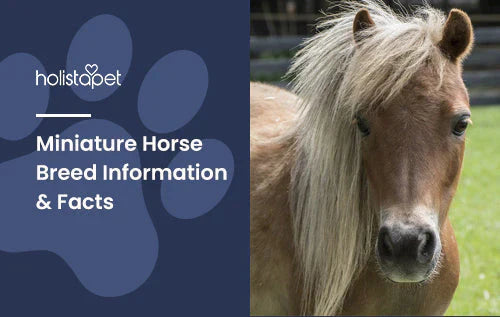
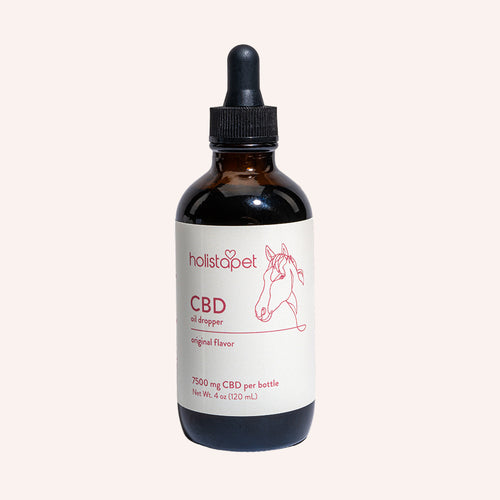 CBD Oil for Horses - Fast Acting
CBD Oil for Horses - Fast Acting
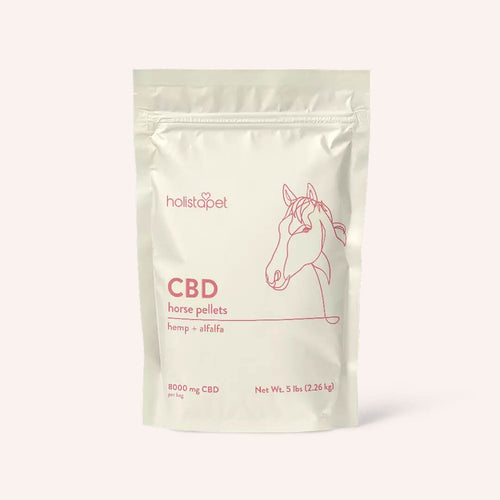 CBD Pellets for Horses - Easy Dose
CBD Pellets for Horses - Easy Dose
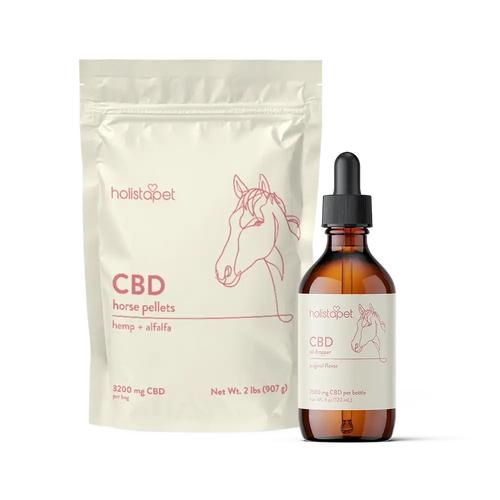 "Ridin' On My Horse" Bundle - Highly Rated
"Ridin' On My Horse" Bundle - Highly Rated


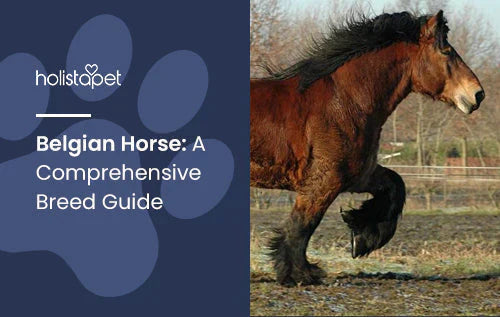
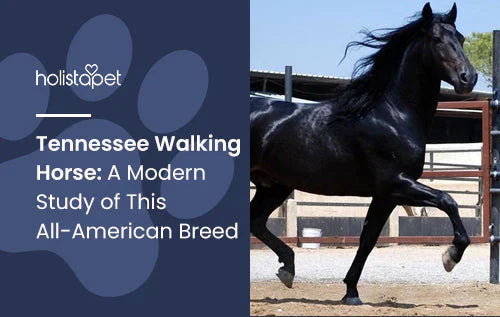

Leave a comment
All comments are moderated before being published.
This site is protected by hCaptcha and the hCaptcha Privacy Policy and Terms of Service apply.